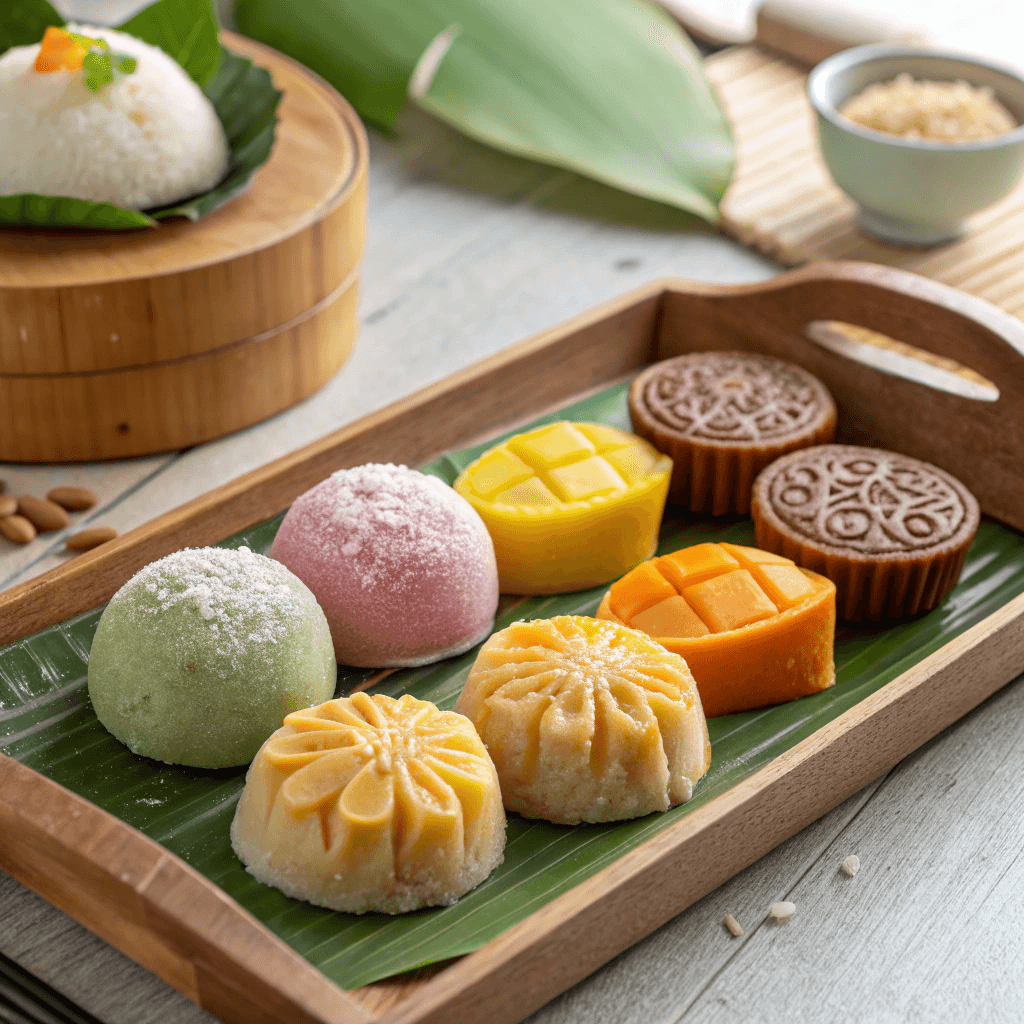Desserts in Asia offer a variety of tastes, textures and traditional recipes, drawing upon generations of culinary innovations and the exchange of cultures. From the exquisite art of Japanese desserts to the full-bodied and thick sweets from India Desserts that captivate and delight both the palate and the mind. Every single dessert, basic or extravagant, functions as a tasty illustration of the region’s past and the identity of its region. The article in this post will not just look into the most well-known desserts in Asia as well as guide on the method to make the most famous treats in your home. Be prepared for an adventure that’s equally educational and delicious.
Table of Contents
How to Make the Most Popular desserts in Asia Step-by-Step
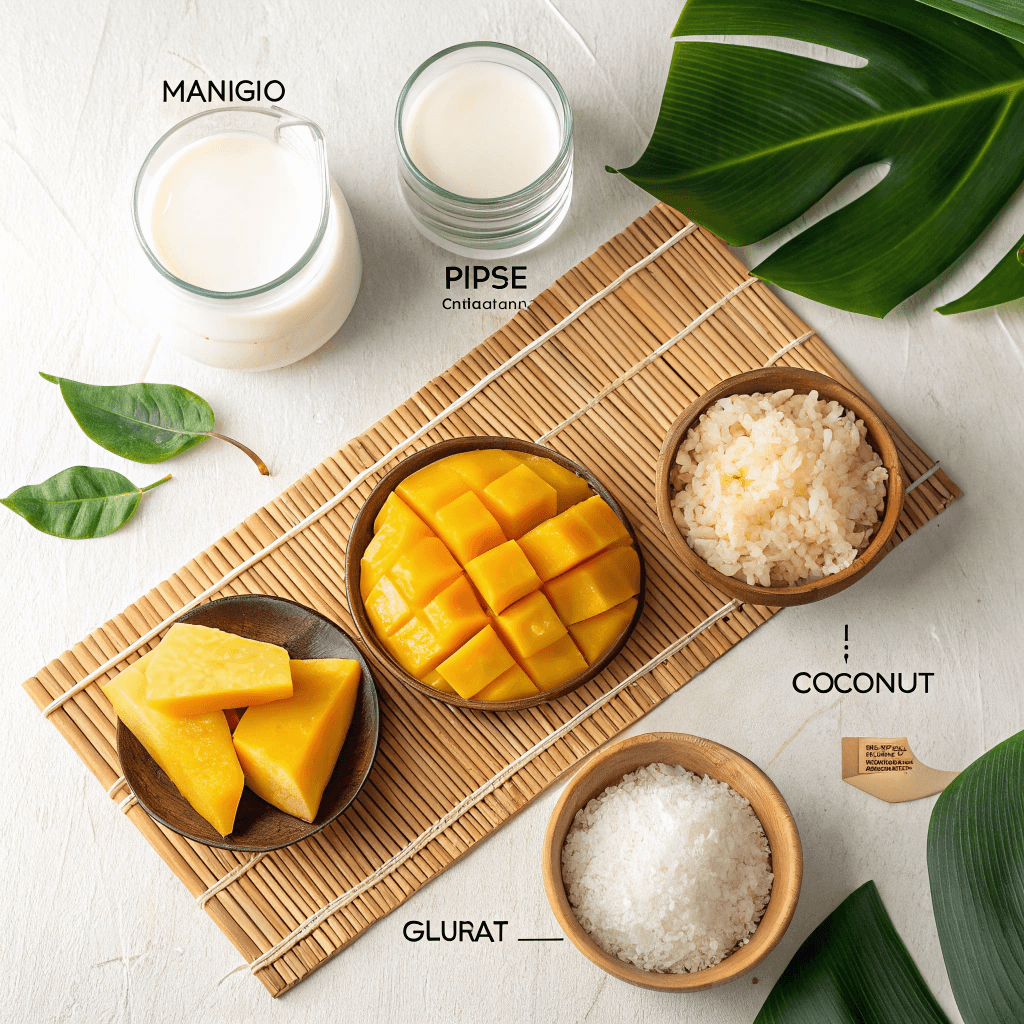
Ingredients for Mooncakes (China)
Mooncakes, which are a cherished Chinese dessert are just as deeply rooted in culture as they are delicious. As their Mid-Autumn Festival being one of the biggest celebrations held in China Mooncakes are a symbol of the unity and families.
- For the Dough:
- All-purpose flour: 2 cups
- Golden syrup: 1/2 cup
- Vegetable oil 1 cup
- Alkaline water: 1 teaspoon
- For the Filling:
- Red bean sweet paste lotus seed paste 2 cups
- Salted egg yolks: 4, halved
- For the Egg Wash:
- Egg yolk 1.
- Milk: 1 teaspoon
Ingredients for Mochi (Japan)
Japanese mochi is adored due to its soft texture and its versatility. When it’s packed with red bean paste, or even frozen ice cream, this treat is a definite hit.
- Glutinous rice flour: 1 cup
- Sugar: 1/2 cup
- Water: 1 cup
- Cornstarch: 1/4 cup (for dusting)
- Sweet paste of red beans 1 cup
Ingredients for Mango Sticky Rice (Thailand)
Mango sticky rice in Thailand is the answer to the pleasures of tropical bliss. The rice is fragrant and sweet, in combination with delicious coconut milk and fresh mangoes, it is a celebration of simple.
- Glutinous rice: 1 cup
- Coconut milk: 1 cup
- Sugar: 1/2 cup
- Mangos that are ripe: 2 cut
- Sesame seeds: 1 cup torn
Mooncakes:
- Making the Dough
Start in mixing golden syrup with vegetable oil and alkaline water into the bowl of a large size. Stir the mixture until it’s homogeneous and homogeneous. Gradually add flour, making sure to stir continuously. After the dough has formed the desired shape, gently knead until it reaches a smooth consistency. The dough should be resting for at minimum 30 minutes. This is vital to make it flexible enough to shape. - Filling and Shaping
The dough is divided into equal pieces. Then, flatten each portion and cover it with an oblong small ball made of sweet paste from red beans or lotsus seeds. If you want to add an authentic flavor put a salted eggs yolk inside the ingredient. The mooncake is gently rolled in order to keep its shape. - Stamping and Baking
Make use of a mooncake mold print intricate designs onto the outside. The mooncakes that you have shaped on a tray lined with baking paper and bake them at 350 degrees F (175degC) in 10 mins. Take them out, apply an egg wash to give them the golden appearance, and return to the oven for an additional 10 minutes. The mooncakes will age for one day following baking helps soften the cake and increases the taste.
Mochi:
- Making the Dough
Mix glutinous rice flour and sugar and water in the microwave-safe bowl. Mix until it is well-mixed. Microwave for 1 minute intervals with a stir in between until the dough turns soft and transparent. The process requires careful attention since overcooking makes mochi hard. - Shaping the Mochi
Sprinkle your work area with cornstarch in order to avoid sticking. Cut the dough into smaller pieces and make each piece flat. Put a spoonful the sweet bean mixture inside and gently cover the dough with it. Make sure the filling is fully sealed. - Finishing Touches
To enhance the flavor of mochi, it can be coated with roasted matcha powder or soybean flour in the days prior to serving. Eat it immediately as mochi is most delicious fresh, when the texture is smooth and firm.
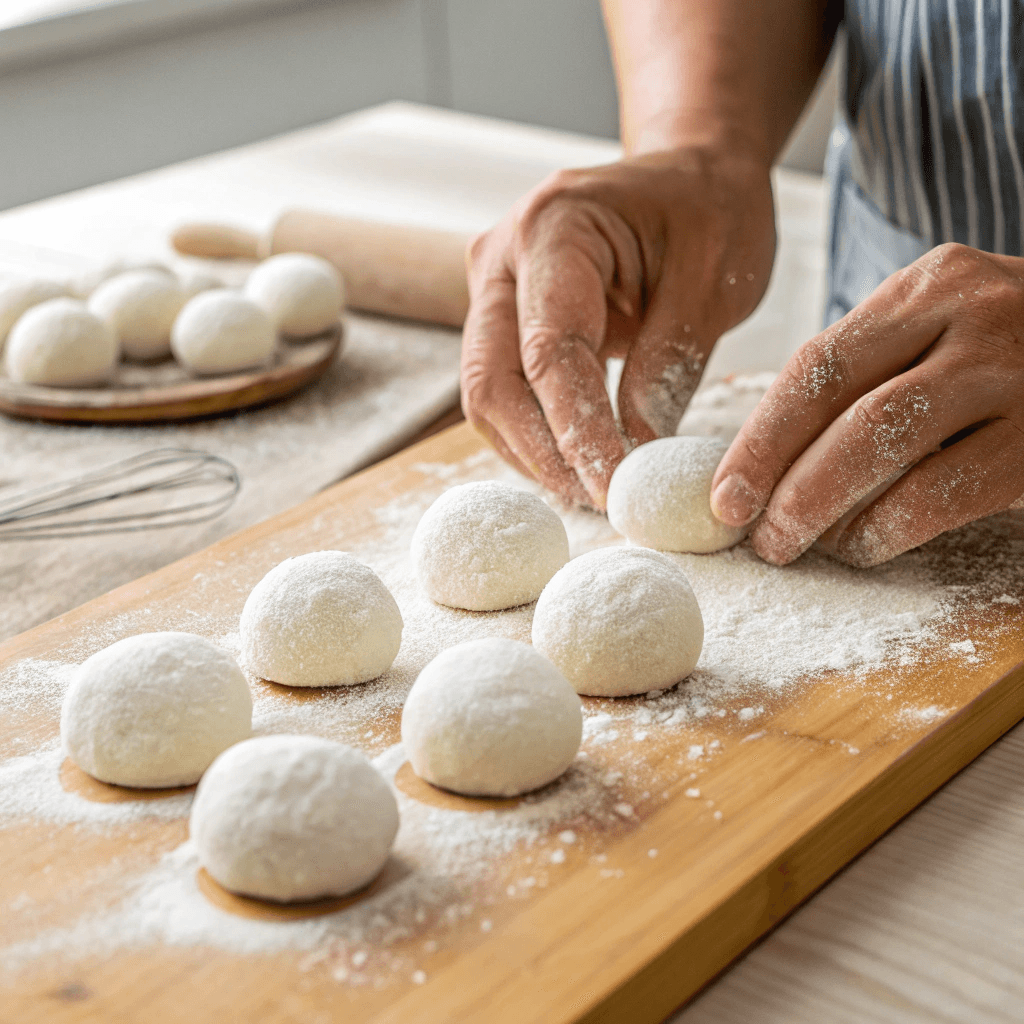
Mango Sticky Rice:
- Cooking the Rice
Start by soaking the glutinous rice at least 1 hour. The rice should be cooked until it’s soft and fragrant. This is essential for achieving the perfect texture. It should be soft but not too sticky. - Preparing the Coconut Sauce
Cook coconut milk and sugar in a saucepan over a simmer Stirring until the sugar has completely dissolved. Divide the sauce in two parts: one to mix in with the rice that has been cooked and the other for drizzled over the cooked food. - Plating
Serve the sticky rice along with slices of fresh mango. Sprinkle generously with reserved coconut sauce and add toasted sesame seeds to add crunch and visually appealing.
Insights and Tips on desserts in Asia
Desserts in Asia such as mochi, mooncakes and sticky rice made of mango, aren’t only delicious however they also hold a importance to the culture. Like, for instance. Asian Desserts These recipes offer an insight to the customs and tastes from the area. Every recipe is a complex combination of textures such as the soft, chewy texture of mochi to the silky sweet mango sticky rice. Additionally, the desserts contain local ingredients like coconut milk and glutinous rice. This makes the desserts heavily influenced by the origins of their recipes.
Advanced Techniques for Perfect Results
- How to make an Perfect Mooncake Crust: The dough needs to be flexible but firm enough to support the intricate patterns it has created during baking. Allowing the cakes to rest for several days following baking is essential for softer crust and mixing the flavours.
- Making Mochi Perfectly: To avoid a sticky mess, be sure that your hands and your work surfaces are covered with cornstarch. Furthermore, using natural colors like matcha and butterfly peas adds visual interest.
- Enhancing Mango sticky rice: Use ripe and delicious mangoes to get the most taste. Toasting sesame seeds prior to cooking adds the aroma of nuts that enhances the food beautifully.
If you’re looking to broaden the palate of their guests, sweets such as Vietnamese and Chinese che and Indian Gulab Jamun show the variety and imaginative desserts in Asia can be. Read this comprehensive guide to Vietnamese Desserts to get more ideas.
Why These Desserts Matter
The most well-known desserts of Asia offer a harmonious mix of texture, taste and traditions. Every one of them tells a tale that is shared, be it the communal serving of mooncakes in celebrations or the pleasure of gnawing into freshly baked mochi. These aren’t just sweets; they’re a journey, which are rooted in the traditions of their cultures. Making these treats at your home, you’re not just enjoying their delicious flavors, but engaging with the rich culture of their origins.
Desserts in Asia are typically complex as they are tasty, which is why they require meticulous attention to each stage throughout the making process. If you’re creating mochi cakes, shaping mooncakes or mastering the mango sticky rice every phase plays an essential function in ensuring that your final product is genuine and tasty.
Concluding Steps for Mooncakes
- Cooling and Storing
Following baking, allow the cake to cool completely in a rack of wire. This will prevent their becoming watery due to the steam trapped. After cooling, place the crusts in an airtight container for minimum 24 hours prior to serving. The process of aging improves the appearance that the dough has and improves the taste. - Presentation
Place the mooncakes on a beautiful plate served with a tiny cup of tea. The intricate patterns make them a stunning centerpiece. They are ideal for parties or gifts.
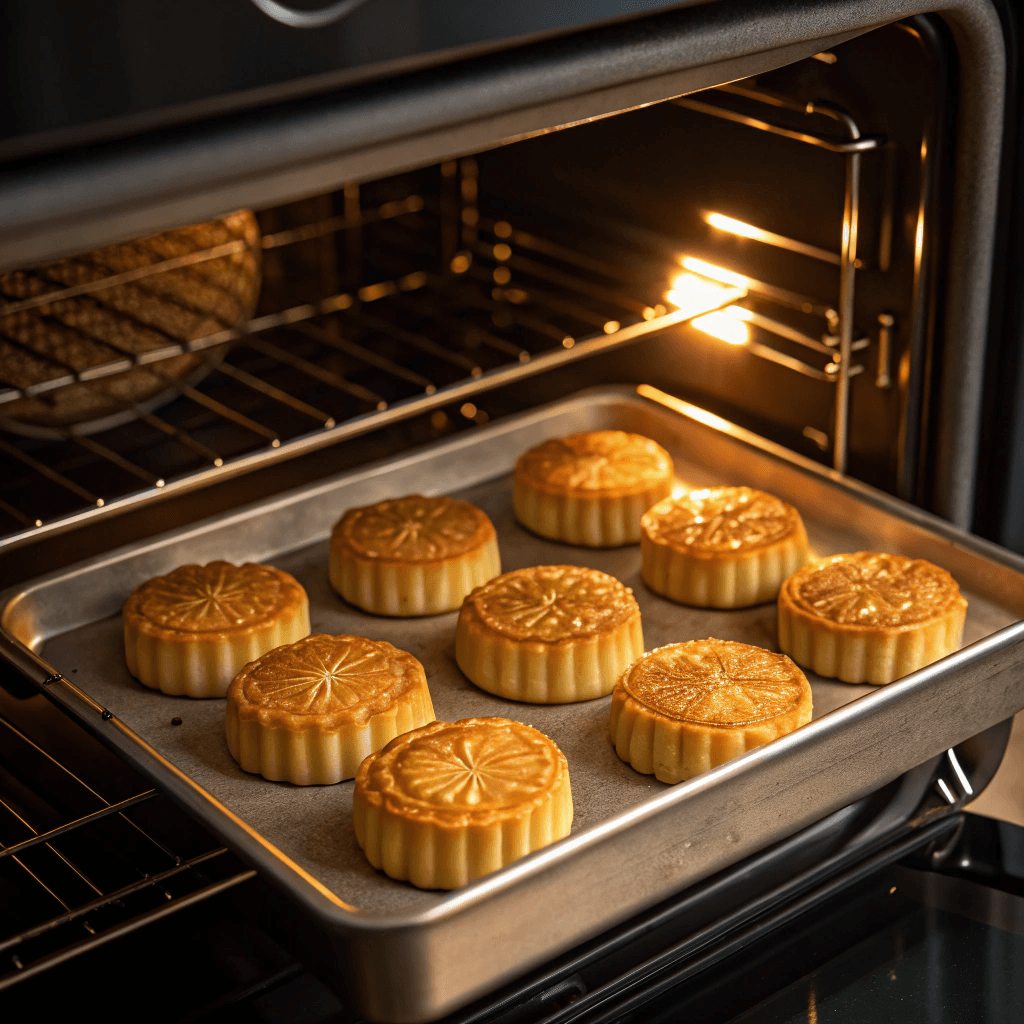
Final Steps for Mochi
- Adding Decorative Finishes
If you wish If you wish, you can roll the mochi ball with cocoa powdered or crushed nuts to give them an added taste and aesthetic appeal. This little addition can make an important difference to the design and flavor. - Serving Suggestions
Mochi can be enjoyed as a dessert on its own or with the matcha-flavored ice cream for a refined finishing touch. Set the pieces out on a bamboo platter for the authentic Japanese appearance.
Final Steps for Mango Sticky Rice
- Balancing Flavors
When you are ready to serve, taste the rice that is sticky and alter the sugar by adding more sugar in the coconut sauce as needed. The balance of the flavorful flavors of coconut milk alongside mango’s natural sweetness is essential. - Plating Creativity
Make use of a small bowl to make the sticky rice into perfect round. Serve a mango slice to the side and serve the platter in coconut-based sauce. Sprinkle with the seeds of sesame that you have toasted, or edible flower petals for an elegant presentation.
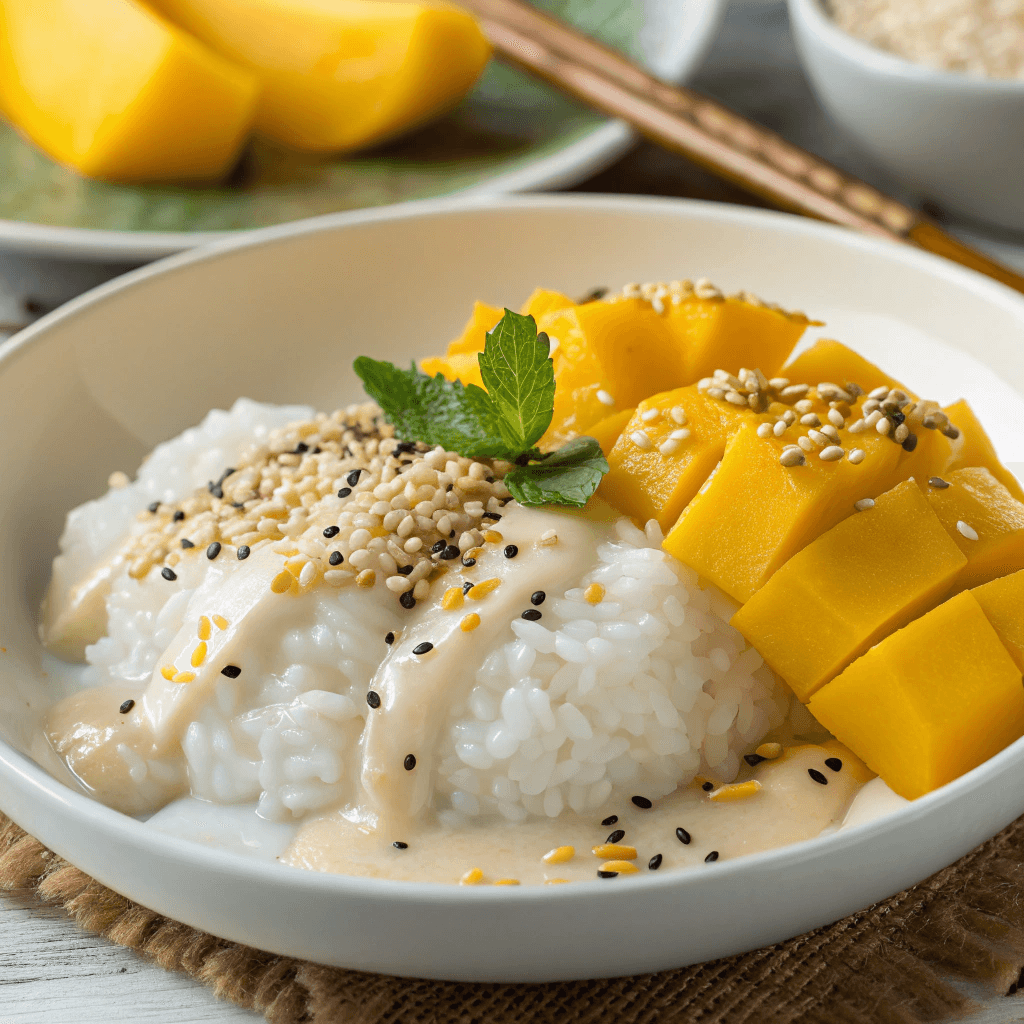
Pro Tips & Variations
Mooncakes:
- In achieving even designs: When pressing the mooncake molds, ensure you apply constant pressure to make sure the patterns remain consistent and unaltered during baking.
- Creative Fillings Traditional fillings such as lotus seed or red bean paste are classic but you are able to experiment with newer options like matcha cream, chocolate ganache or even chocolate.
Mochi:
- Storing Leftovers For them to keep their softness, wrap any leftover mochi with plastic wrap and place them in a sealed container at the room temperature up to one day. Beware of refrigerating because it can cause the mochi to harden. texture.
- Colourful Mochi: Incorporate natural food colorings such as turmeric or beet juice in the batter for an exciting new twist.
Mango Sticky Rice:
- Alternative Fruits Although mango is a classic fruit but other tropical fruits such as papaya or pineapple can perfectly complement coconut rice.
- Savory Twist Sprinkle a bit of salt in the coconut sauce to provide an elegant contrast with the sweetness. This will enhance the flavor’s overall depth.
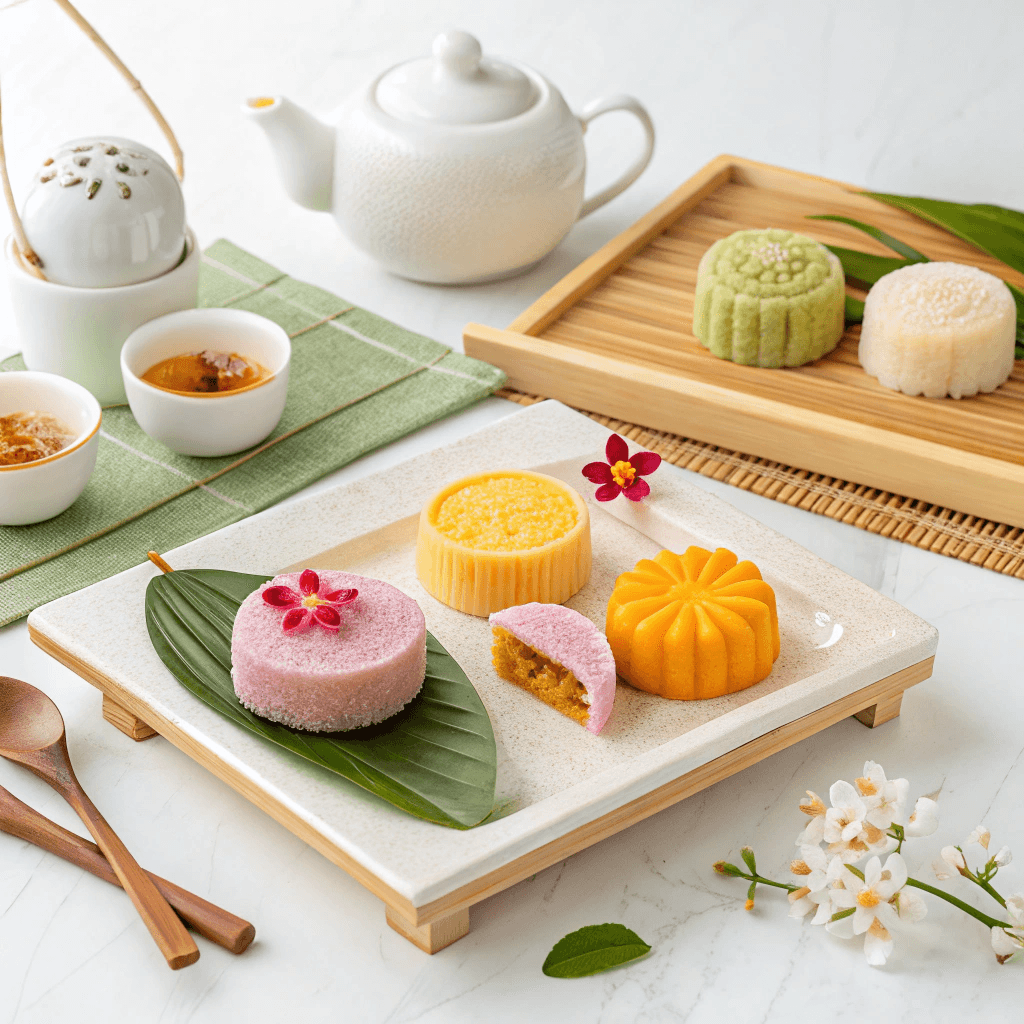
FAQs About Desserts in Asia
What are the 3 most popular desserts from China?
China is famous for its many dessert options, and three of the most sought-after desserts are mooncakes (sweet rice balls made of glutinous rice), and egg tarts. Mooncakes have a particular cult status in this time period. Mid-Autumn Festival, tangyuan symbolize families and the bond of the Lantern Festival, and egg tarts show the impact of Western baking in Chinese dishes.
Which is the most popular of desserts that are most well-known?
The number one most loved desserts in Asia is a matter of opinion, since each nation has its personal favorite desserts. But, Japanese mochi often ranks high due to its wide attraction and its versatility. The chewy texture and various fillings makes mochi an extremely popular food across diverse nations.
Which is the most-loved dessert served in Japan?
In Japan mochi is without doubt an extremely sought-after desserts. It is a traditional rice cake that comes in many variations, like daifuku (mochi that is filled by red bean paste) and sakura mochi (pink mochi wrapped with an eucalyptus leaf). Its popularity stems from the significance of its culture and the availability throughout the year.
What kind of desserts are eaten in the world’s most popular ways?
In the world, ice cream is considered to be the most frequently consumed sweet treat. The appeal of ice cream is its wide variety of textures, flavors, and flexibility to different styles of life. In Asia Mochi Ice cream is gaining huge popularity. It blends tradition and modern tastes seamlessly.
Do you have Gluten-free Asian Desserts?
Many Asian desserts naturally contain gluten. Like mochi and sticky mango are made with glutinous rice flour, or rice for their basis which makes them ideal for those with gluten intolerance. This is a great example of the use of different cereals and flours.
What is it that makes Asian desserts distinct in comparison to Western sweets?
Asian desserts typically feature more light, less sweet tastes when compared with the Western counterparts. The ingredients like beans, rice, and fruits are the main focus and contrast with the sultry dairy and sweets made of sugar that you typically find throughout the West. In addition, Asian desserts frequently incorporate symbols that are tied to culture practices.
Conclusion
Most popular desserts from Asia are not just desserts; they’re an expression of the heritage, culture, and innovation. From the elaborate designs of Chinese mooncakes to the exotic simplicities of Thai sticky rice made of mango Each dessert provides an unique look into its history. Through exploring the recipes and ways to prepare them, you’ll add a touch of Asia in your kitchen and connect with the rich tradition that makes these sweets unique. When you’re eating a delicious mochi bite, or enjoying the mooncakes at a party the classic sweets will leave an impression.
